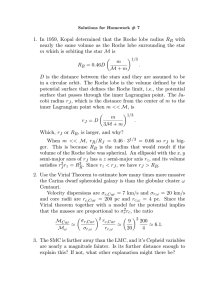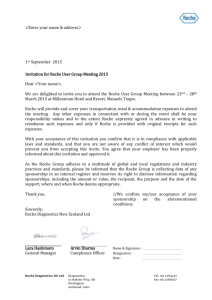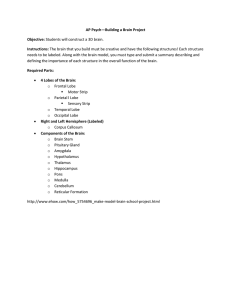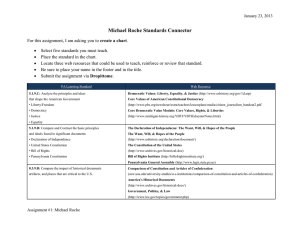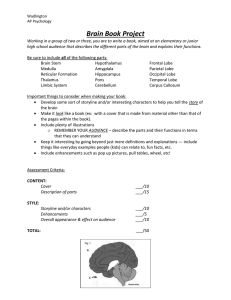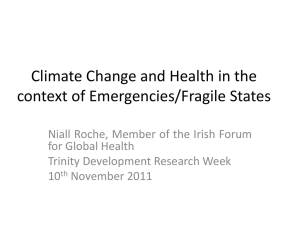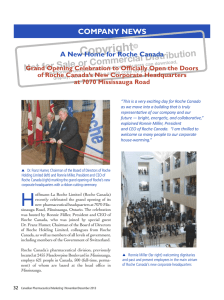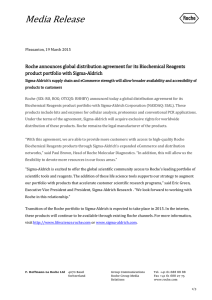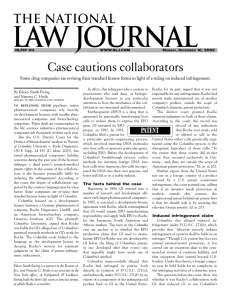1. In 1959, Kopal determined that the Roche lobe radius... with nearly the same volume as the Roche lobe surrounding the...
advertisement
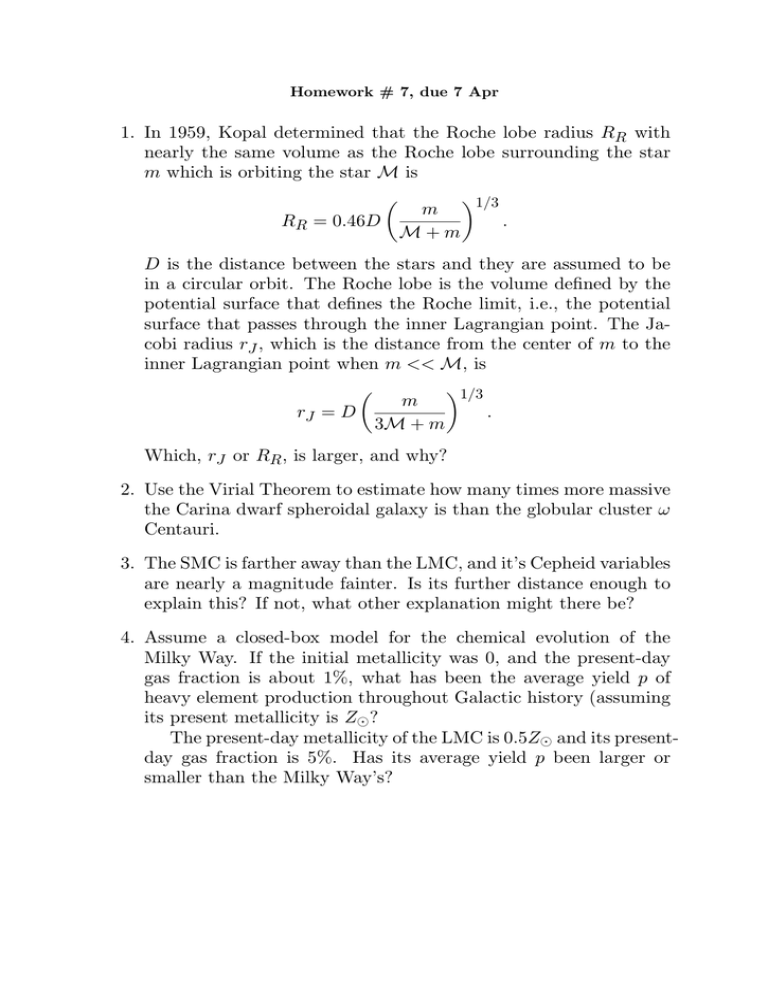
Homework # 7, due 7 Apr 1. In 1959, Kopal determined that the Roche lobe radius RR with nearly the same volume as the Roche lobe surrounding the star m which is orbiting the star M is 1/3 m RR = 0.46D . M+m D is the distance between the stars and they are assumed to be in a circular orbit. The Roche lobe is the volume defined by the potential surface that defines the Roche limit, i.e., the potential surface that passes through the inner Lagrangian point. The Jacobi radius rJ , which is the distance from the center of m to the inner Lagrangian point when m << M, is 1/3 m . rJ = D 3M + m Which, rJ or RR , is larger, and why? 2. Use the Virial Theorem to estimate how many times more massive the Carina dwarf spheroidal galaxy is than the globular cluster ω Centauri. 3. The SMC is farther away than the LMC, and it’s Cepheid variables are nearly a magnitude fainter. Is its further distance enough to explain this? If not, what other explanation might there be? 4. Assume a closed-box model for the chemical evolution of the Milky Way. If the initial metallicity was 0, and the present-day gas fraction is about 1%, what has been the average yield p of heavy element production throughout Galactic history (assuming its present metallicity is Z ? The present-day metallicity of the LMC is 0.5Z and its presentday gas fraction is 5%. Has its average yield p been larger or smaller than the Milky Way’s?
